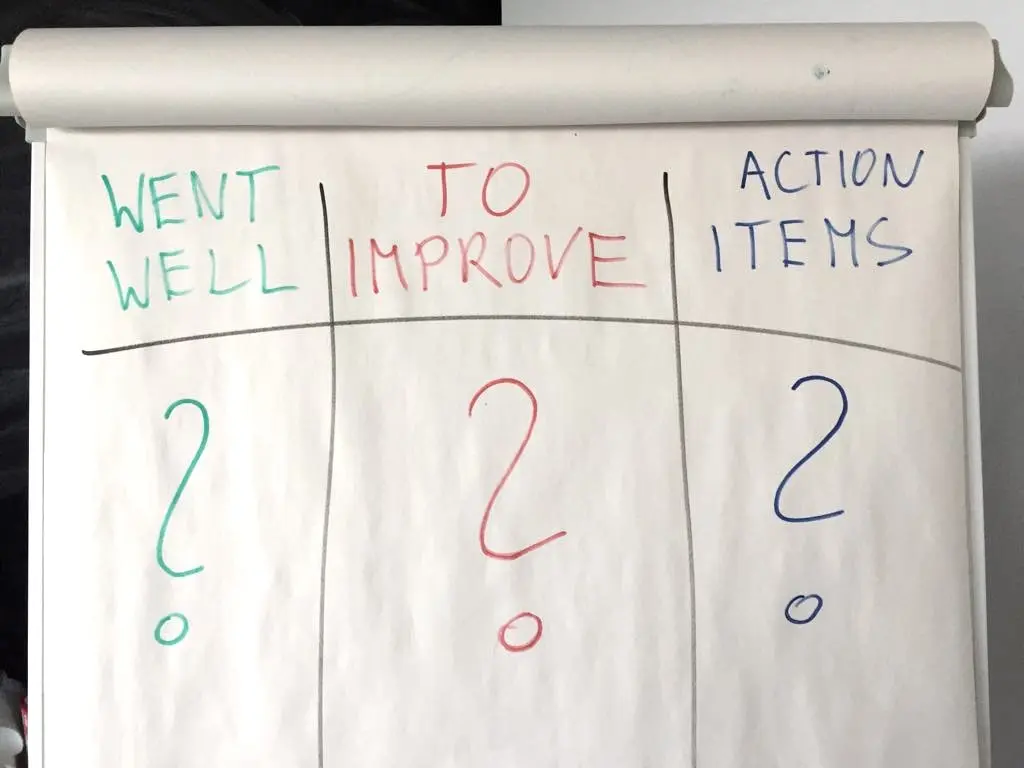Retrospective meaning and how to run it?
17 Nov 2021 • 5 min read

Ida Kulawik

Retrospective (Latin retrospectare – look back) – means meeting crowning the sprint. The basic idea of the retrospective is to analyze the past, stop, think about and correct the chosen path and improve it if necessary. The first step is to look into the past, and the next step is acquiring knowledge and drawing conclusions. However, you don't have to use retrospectives only to correct the path taken. It is also an opportunity to raise awareness of current successes and thus may increase the motivation of the team. At the same time, the retrospective is part of risk management. Thanks to the analysis of the chosen route and possible corrections, the risk can be identified more quickly and managed better [1].
To bring theory to practice, we brainstormed in our team and attempted to present our experiences of the last element of the Agile ceremonial.
What are the benefits of a well-conducted retrospective?
The main benefit of the retrospective is to identify problems that occurred during the sprint in the team. Another perk is revealing external factors that hindered the achievement of the sprint goal. This encourages the team to look for solutions in order to improve the next sprint.
The obvious benefit is to clean the atmosphere inside the assembly. Clashes, for example, occur at the communication level between the Product Owner and developers, or frontend and backend developers. In retrospect, you can talk about it in an atmosphere of peace and honesty without the pressure of deadlines. The retrospective can help rebuild the team’s team spirit for the next sprint. It also confirms a common understanding of the team and company goals.
What is the most difficult part of a retrospective?
Communication with people may be challenging at times. In retrospect especially, honesty and openness to feedback are fundamental, and this is not always easy. Sometimes a retrospective requires working on our personality traits and style of discussion. It is also an opportunity to improve assertiveness.
The key to a successful retrospective is to designate an action plan and its execution. The aim is to exclude already identified problems from subsequent sprints and that you do not need to talk about them again.
If the team rarely implements the improvements, it means that there is difficulty in making positive changes to the work. If, however, despite the efforts of the band, the changes do not bring any effect, it means that the problem may lie outside the band.
How to make participants openly talk about the problems encountered?
It is important to create the right atmosphere by holding the meeting in a separate room. The time intended only for the retrospective of the team should also be untouchable. Appropriate tools are also important, especially for dispersed teams.
Not everyone talks about problems with equal ease and this is natural to different characters on the team. This is why the support of team members is crucial to those who feel uncomfortable with giving or receiving feedback.
What is the recipe for a successful retrospective?
As mentioned above, it is very important to create an action plan with points to which the team members will be assigned, so that they are not dead lists.
It is important that the team has a well-prepared, experienced moderator who will conduct the meeting in an efficient and substantive way. This role can not be overestimated - at the end of the day, it is the moderator who cares for the structure of the meeting. He/she keeps track of time and makes sure the team stays on the topic.
It is important that every team member prepares for the retrospective in advance - either during the sprint or right before the meeting. Participants have to list the things that have been successful during the sprint and the ones that need to be improved. This allows for constructive and substantive discussions during the meeting.
It is also worth using ready-made tools, exercises, and games that help improve the retrospective. You can also implement your ideas for this purpose. One such improvement could be inserting cards with notes that teammates read during a retrospective into a special box.
Do you have other ideas on how to make retrospective successful? Share them in a comment.
P.S. Soon, the next episodes of the series “Agile in practice”.
Share:
Looking for expert development team?
Schedule a call with Tech Consultant

Ida Kulawik
Vege lover. Check my blog